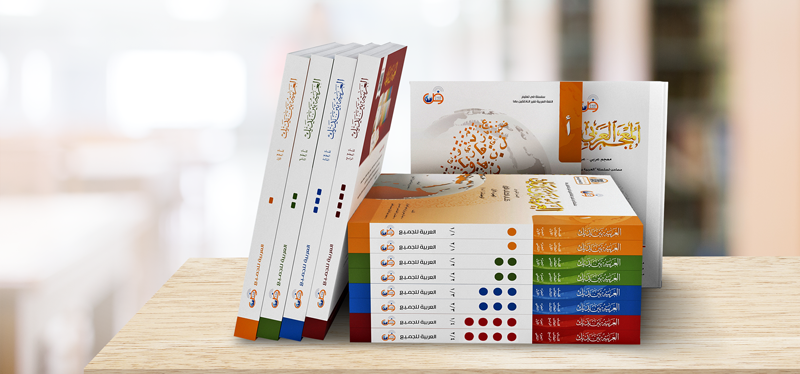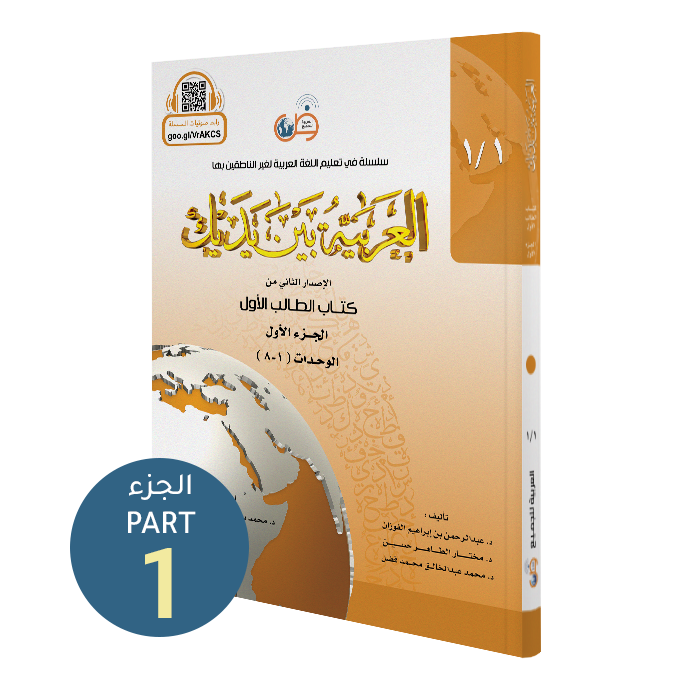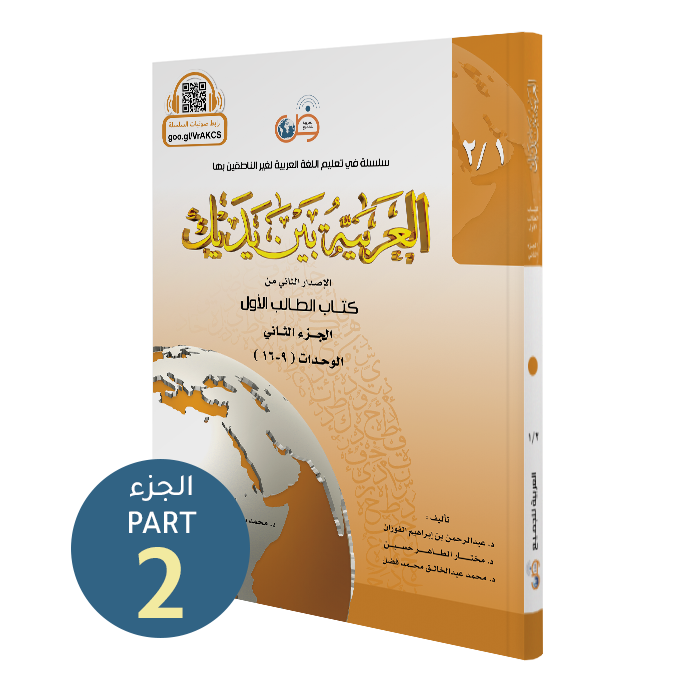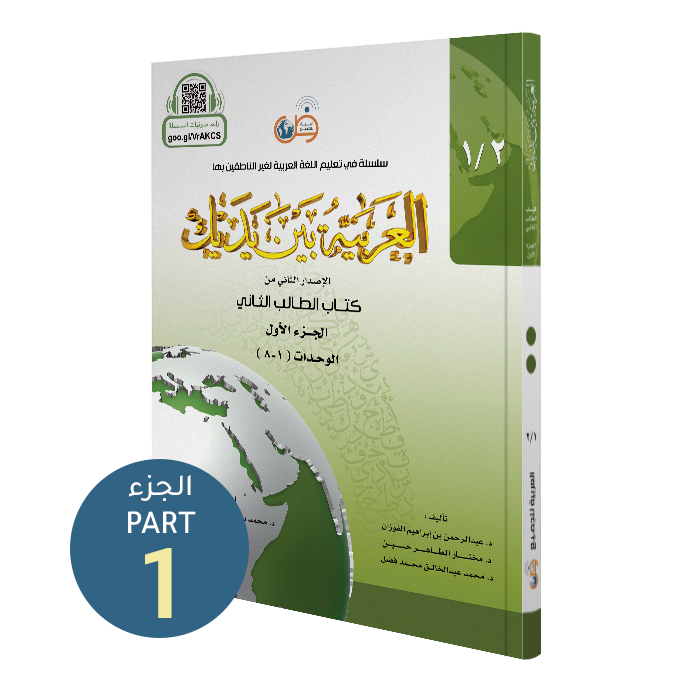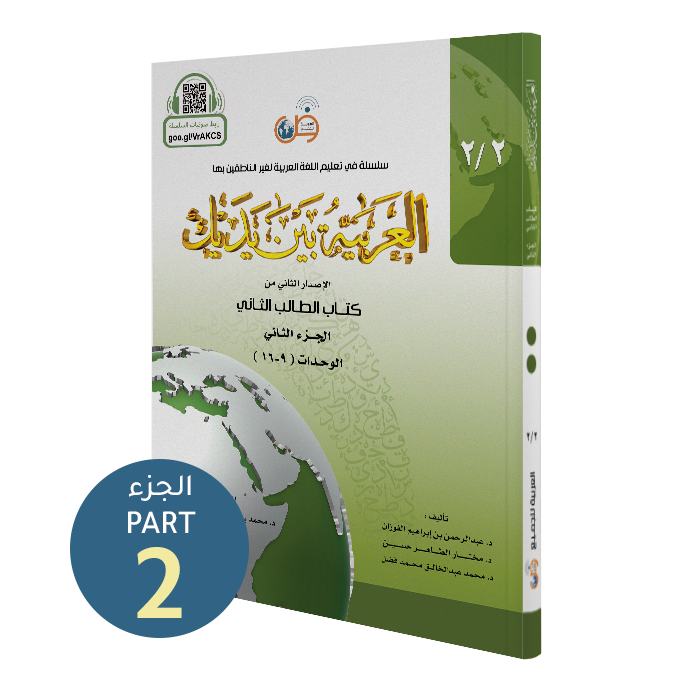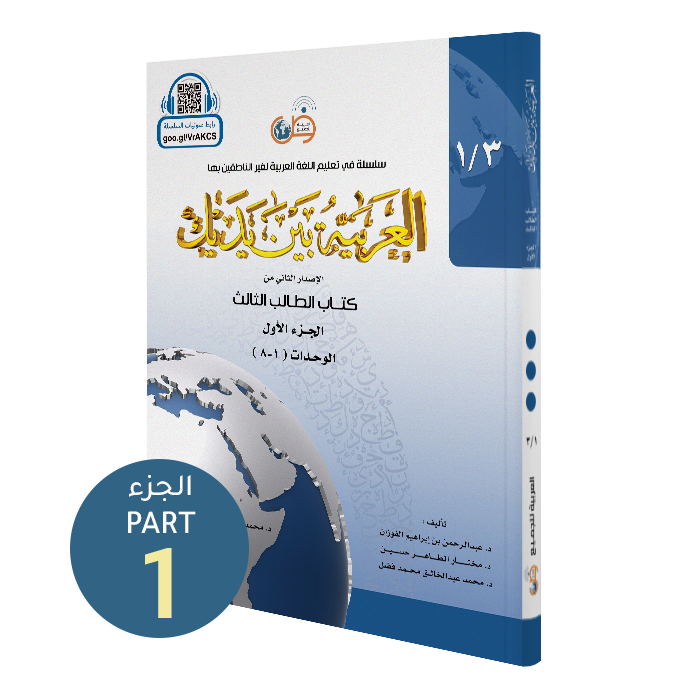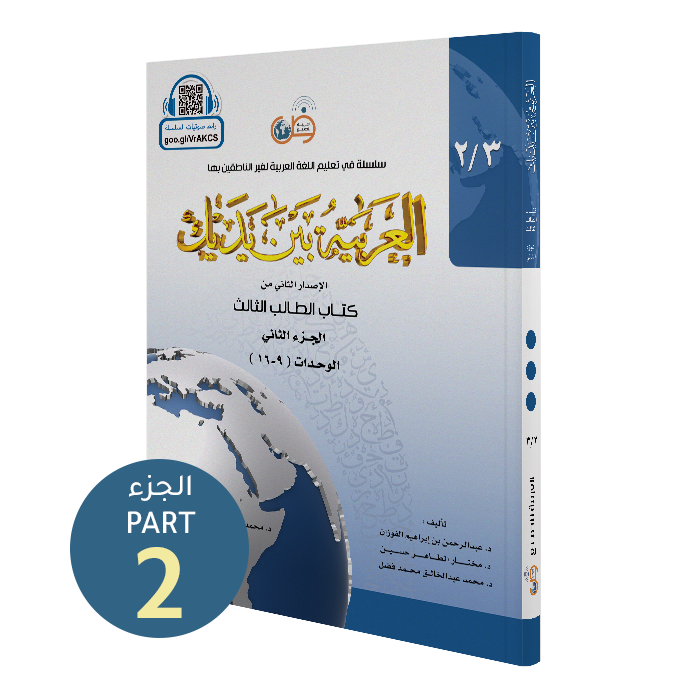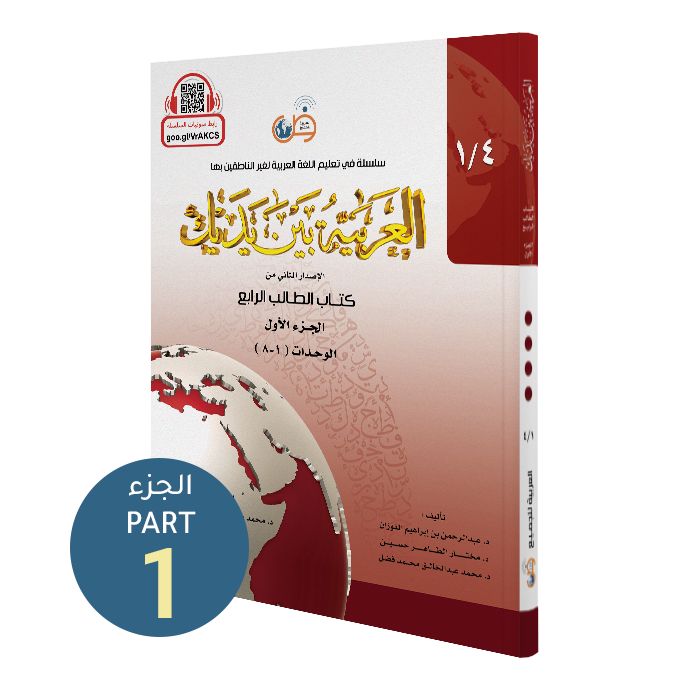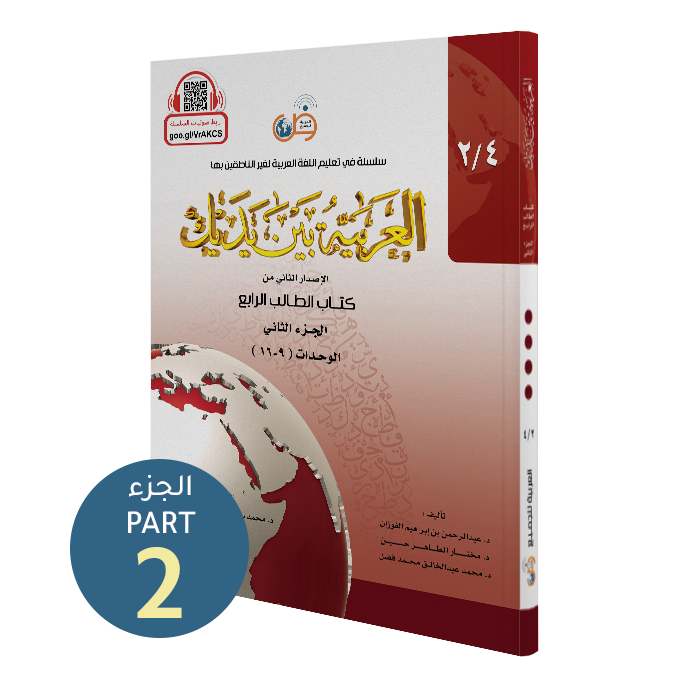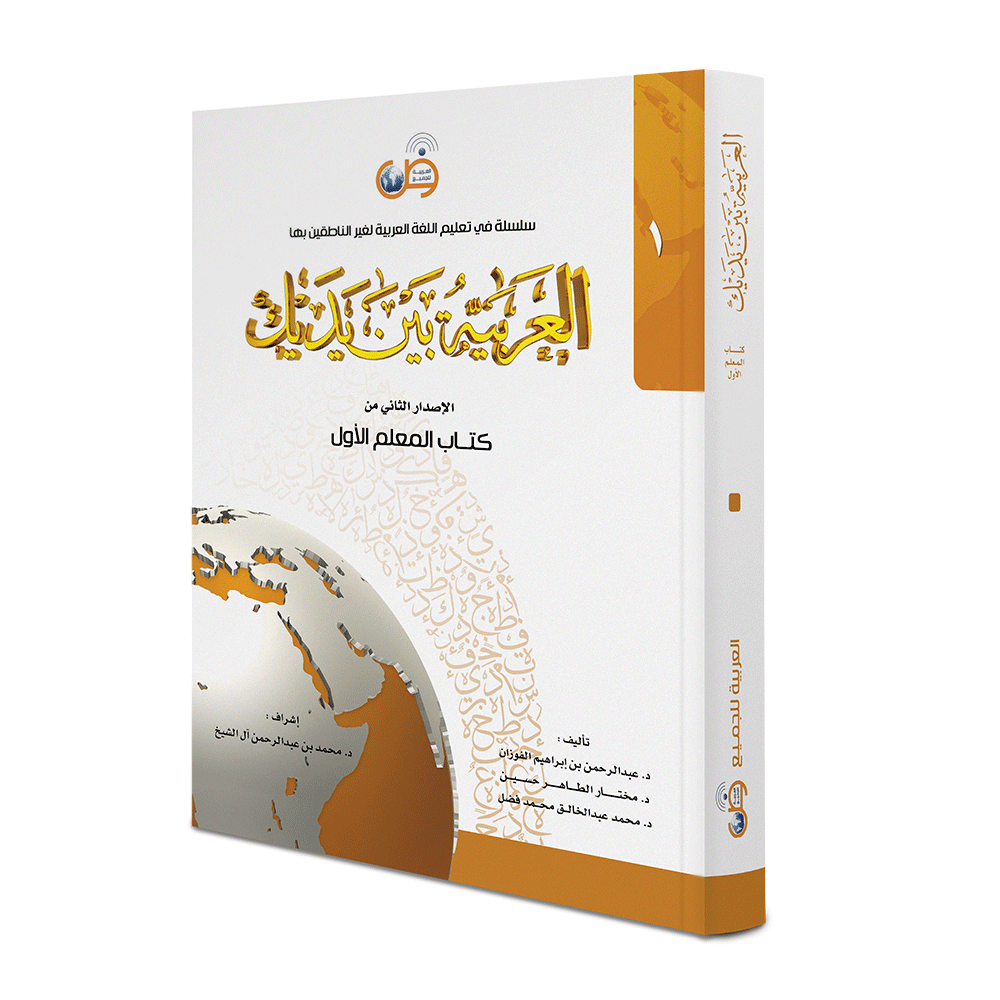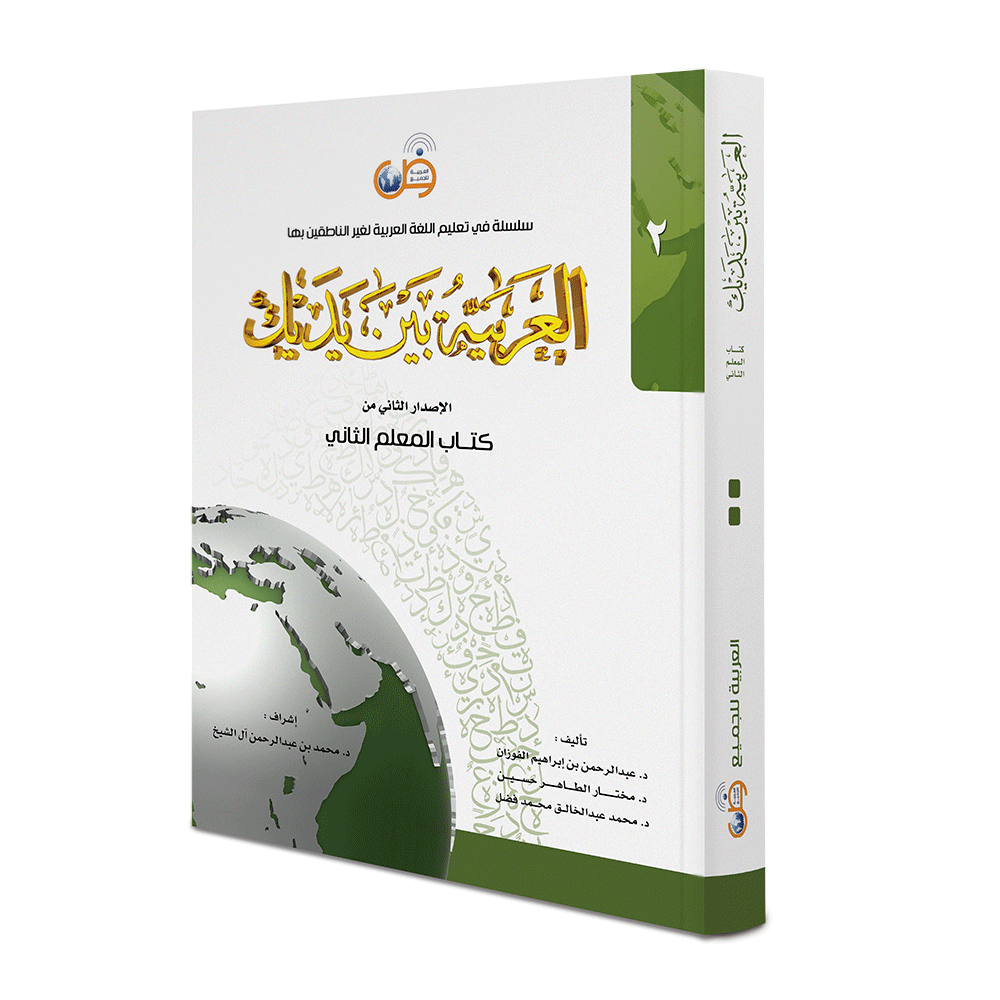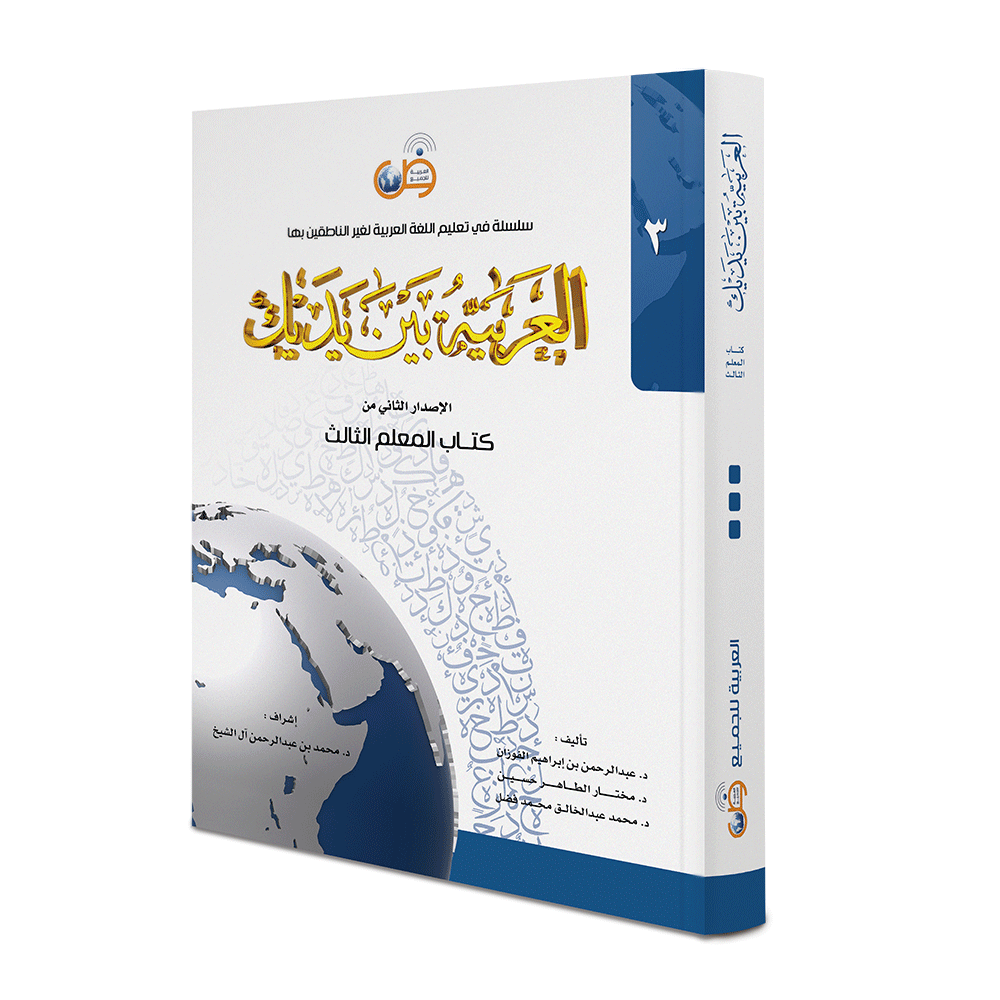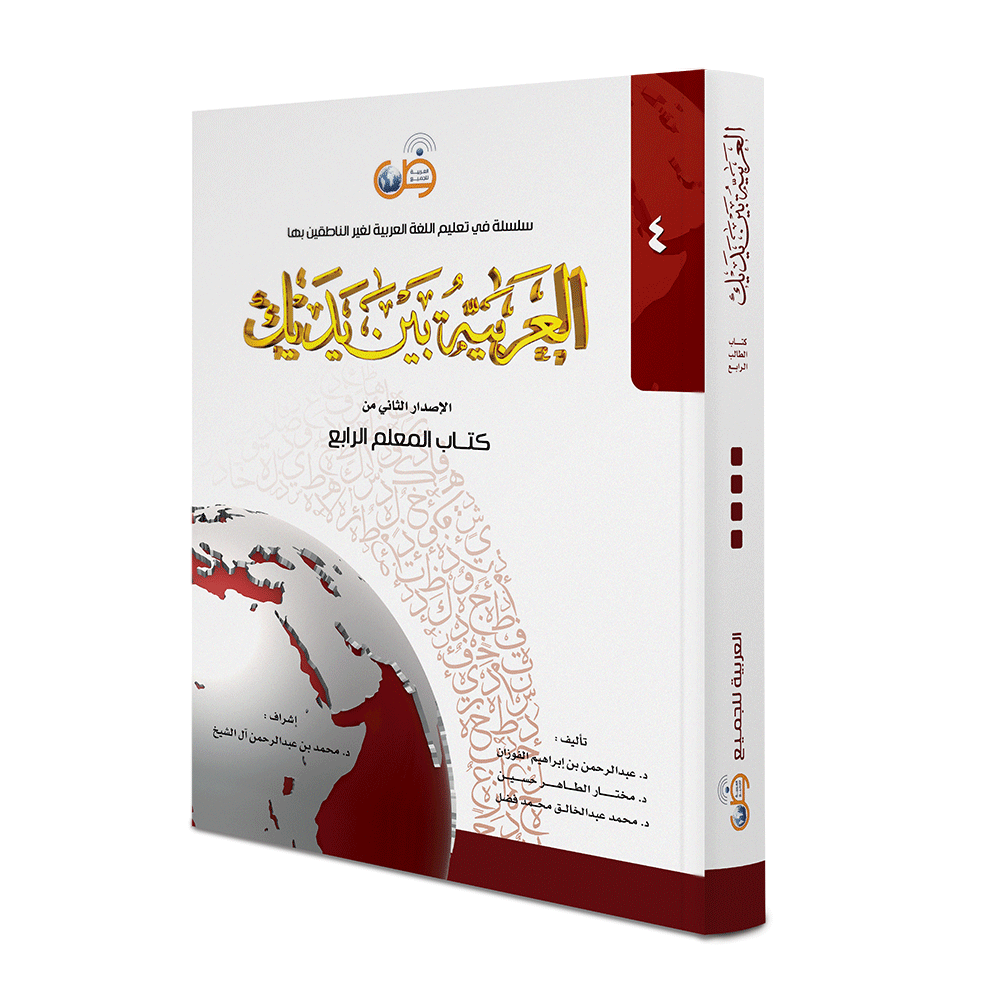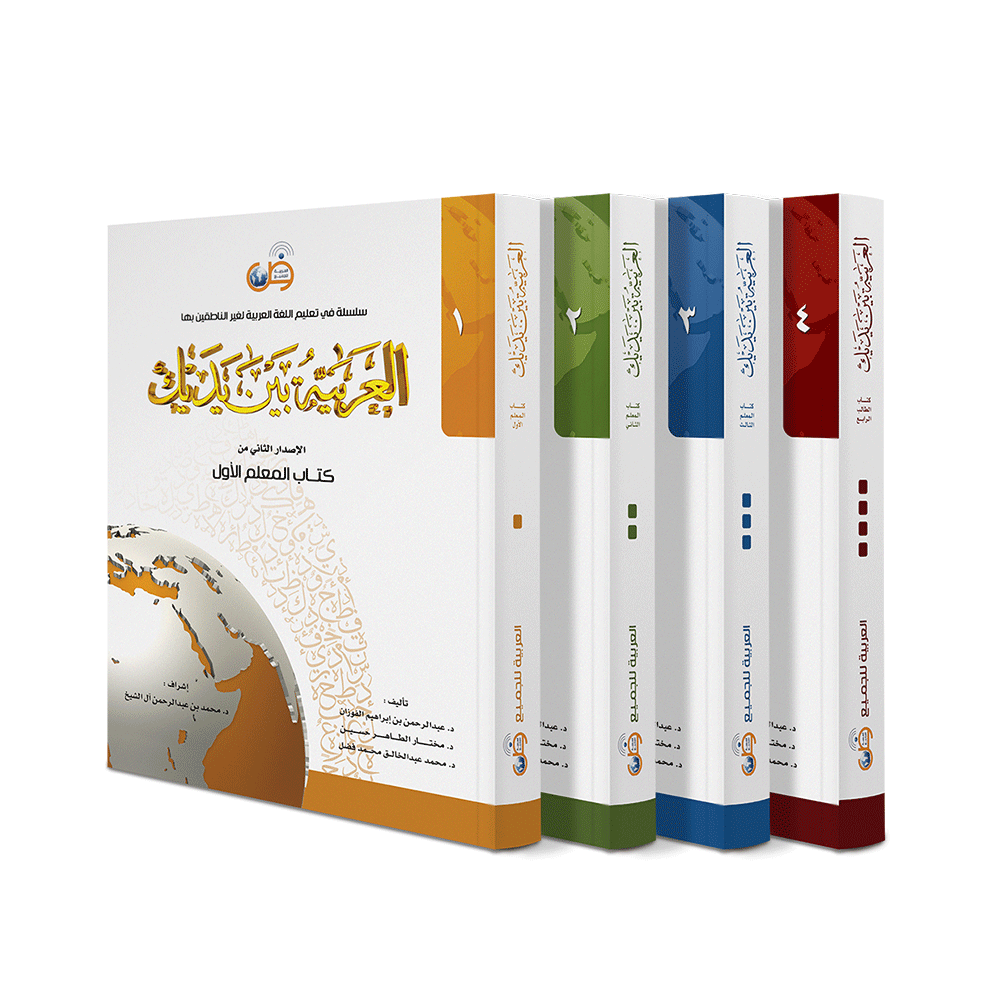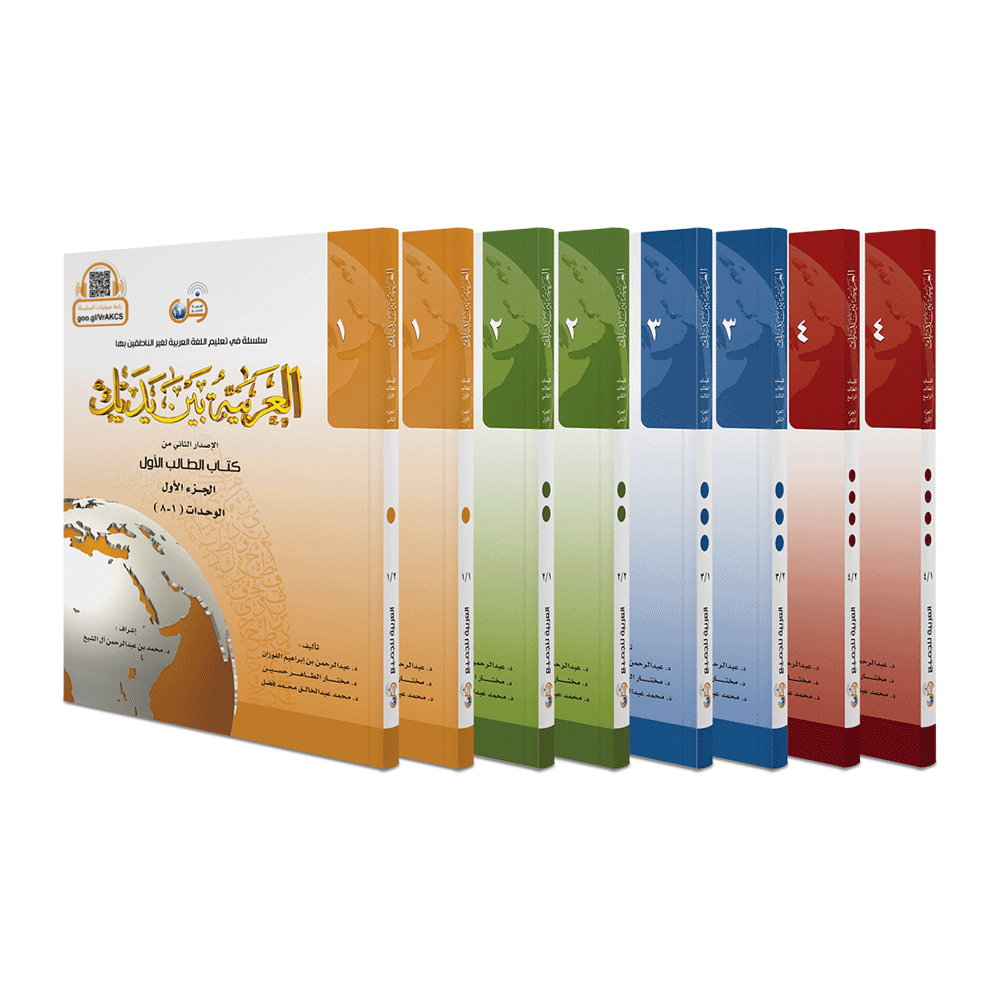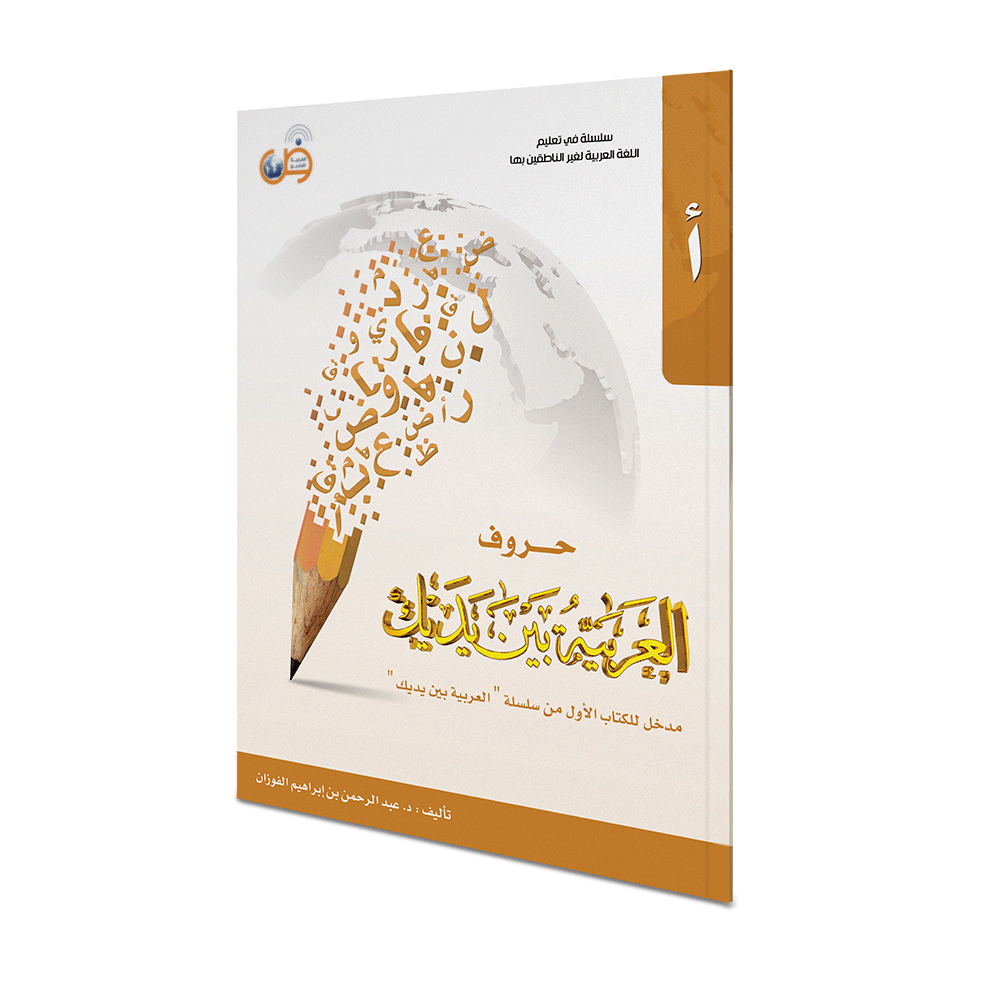Goals of the Series:
The series aims to empower the learner with the three language competencies:
- Linguistic competence - Communication competence - Cultural competence.
Audience of the series:
The series is intended for adult learners, whether they are regular students in educational institutions or non-regular students teaching themselves by themselves, and whether the series is taught in an intensive program, for which many hours are allocated, or in a non-intensive program devoted to a few hours.
On the other hand, the series addresses the learner who has not previously learned Arabic. Thus, it starts from zero and proceeds with the student forward. In order to master the Arabic language, in a way that makes him able to communicate with speakers of it verbally and in writing, and enables him to enroll in universities that take Arabic as the language of instruction.
Language of the Series:
The Series depends on fluent Arabic language and does not use any of the colloquial Arabic dialects, as it does not use intermediate language.
Series components:
The series consists of the following books and materials:
- The Student’s Book (1) has two parts, and the Teacher’s Book (1) - for the beginner level.
- The Student’s Book (2) has two parts, and the Teacher’s Book (2) - for the intermediate level.
- The Student’s Book (3) has two parts, and the Teacher’s Book (3) - for the advanced level.
- The Student’s Book (4) has two parts, and the Teacher’s Book (4) - for the distinguished level.
Series collocations:
The Arabic Dictionary Between Your Hands - The Arabic Letters Handbook - An Audio material that can be accessed through Audio material page
Series features:
The series is guided by the latest methods and methods reached by the science of teaching foreign languages, taking into account the nature of the Arabic language, with its distinct personality and unique characteristics. Among the vectors that were taken by the series are the following:
Integration between language skills and its components.
Taking care of the phonemic system of the Arabic language for recognition, distinction, and production.
Taking into account the gradation in the presentation of the educational material.
Taking into account the individual differences between the students.
Use a variety of exercises.
Appropriateness of the content to the level of students.
Adjust the texts in the form, whenever the need arises.
Follow the unit educational system in the course presentation.
Attention to the functional aspect, when presenting language structures in the early stages.
Interest in oral skills in the first book.
The balance between language elements and skills.
Suitability of the series for the Arabic language teacher.
Listing new vocabulary and expressions contained in each book.
Benefit from lists of common grammatical structures.
Putting progress tests in each book.
Presenting cultural concepts in interesting ways.
Using the image, especially in the first and second books.
The time allotted for teaching the series is approximate:
Basic lessons = 576 lessons, in addition to 24 lessons = 600 lessons for tests.
It can be taught in 24 weeks if you are teaching in a program that offers 25 hours of instruction per week
It can be taught in 30 weeks if you are teaching in a program that offers 20 teaching hours per week
It can be taught in 40 weeks if you are teaching in a program that offers 15 teaching hours per week
It can be taught in 60 weeks if you are teaching in a program that provides 10 teaching hours per week
It can be taught in 75 weeks if you are teaching in a program that offers 8 hours of instruction per week
It can be taught in 120 weeks if you are teaching in a program that provides 5 hours of instruction per week

